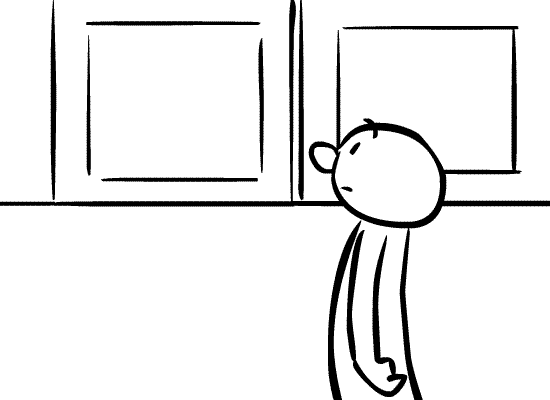Strengths
- What I'm good at
-What comes naturally
My strengths are Pitching and Leadership so I am good at keeping everyone focused on there work and co-operating to get the project finished. It also means I can get a game across to a client even if it is not complete I feel I can paint a picture in their head and show them what they want to see.
I've tried my hand at Modeling , I wouldn't say i'm the best but I'm fast improving.
Weakness
- What I need to work on
- Self Critical
I have got very weak skills in Animation and not very much skill in VFX this is because I have trouble with Maya but am working each night to familiarize myself with the program.
I have a problem meeting deadlines because I put so much effort into my work making them just right that I spend to much time and don't get them finished, I have set a target for myself to increase the rate of work.
Opportunities
- What I have to help me progress
-Key things that happen on the course
I have a access to Maya, 3DS Max, Adobe After Effects and many other programs each and everyday. Stephen Hay came from EA and I pitched my groups game "Motherland" and he appraised it quite highly noting on the narrative i'd written for main character. Ant and Mike (my tutors) are on hand anytime of the day to help with work or answer any questions I have.
Threats
- Obstacles I have to overcome.
- Problems I must face and solve
At home I don't have the greatest computer and I can't help feeling that it limits my potential and causes frustration especially when comparing mine to the colleges machines. Maybe not getting the grades for university. Having to follow a long career path to get my dream job.
Friday, 17 June 2016
Legal Entities
Definition - An association, corporation, partnership, proprietorship, trust or individual that has legal capacity to enter into agreements or contracts, assume obligations, incur and pay debts, sue and be sued in its own right and to be held responsible for its actions.
1) Unincorporated association – An organisation set up through an agreement between a group of people who band together for a purpose and not revolved on money, such as a volunteer group or a sports club. You don’t need to register an unincorporated association, and its free to set one up. the members of the "Unincorporated Association" are personally responsible for any debts and contractual obligations. If the association does start trading and makes a profit, you’ll need to pay Corporation Tax and file a Company Tax Return in the same way as a limited company.
2) Limited partnerships – The liability for debts that can’t be paid is split among partners. Partners’ responsibilities differ as general partners can be personally liable for all the partnerships’ debts and limited partners are only liable up to the amount they initially invest in the business General partners are also responsible for managing the business
3)Limited liability partnerships – The partners in a partnership aren’t personally liable for debts the business can’t pay – their liability is limited to the amount of money they invest in the business. The partners’ responsibilities and share of the profits are set out in an Limited liability partnership agreement. ‘Designated members’ have extra responsibilities.
5)Sole trader – If you start working for yourself, you’re classed as a self-employed sole trader. As a sole trader, you run your own business as an individual. You can keep all your business’s profits after you’ve paid tax on them. You can employ staff. the phrase Sole trader just means you’re responsible for the business, not that you have to work "solo".
4)A private limited company - is often a small business such as an independent retailer in a town. Shares do not trade on the stock exchange. However a public limited company can sell their shares on the stock exchange. There are 2 types of limited company.
6)Limited company – A limited company has special status in the eyes of the law. These types of company are incorporated, which means they have their own legal identity and can sue or own assets in their own right. The ownership of a limited company is divided up into equal parts called shares. Whoever owns one or more of these is called a shareholder.
Thursday, 16 June 2016
Games and VFX Contract types
Contracts
definition.
Under a contract, the contractor agrees to give the money and supplies needed to the contracted company so they create a product (or in this case a game) and then gain profit from it to fund the next contract. The game company gains money by being supplied with the required amount to start a project and then gain a profit to support their company.
Freelance - They are self-employed or are part of other companies and often look after their own tax and National insurance contributions. They might not be entitled to the same pay as other workers.
They have flexible hours, control over jobs and clients, they can work where they want, are their own boss and keep all the profits which are good but they don't get reliable amounts of work, there's a lot of legwork and there's the chance of not getting paid.
Contractor - Work in contracts which usually only last about 6 months but can do multiple contracts for the same company. They receive more earnings and great variety in their job as well as good flexibility, they get free training on the job and a good work/social balance.
On the downside there is some difficulty staying in contract, getting time off between contracts, hard to create a safety net when contracts are unreliable, as well as hard to get holidays when contracts can be so spontaneous.
Permanent Contract - Where you are employed by the company until either the employer or employee decides to stop working there. With this you have insurance of a job, you will get holiday and sick pay, you may get a pension scheme set up and it may provide a job advancement.
Full Time - Full time employment is when an employee works a minimum amount of hours defined by their employer. They have access to paid leave, have a regular rotor each week that wont be changed without notice, earnings that allow you to be applicable for loans, are paid usually in advance so you have money till you find a new job. The problem is it can become boring and job hunting can become hard when you have only a select skill set.
Part Time - A part time employment is the same as Full-time but has fewer hours to work. There's good flexibility and more often than not you only work 1 part of the day, can make extra money when there's busy periods at work. You don't receive the same benefits as full-time workers, no paid time off, no career ladder and are the most likely to be laid off first.
Internship - An internship is when an employer offers a job to work for a limited amount of time usually for about 12 months. This gives them a chance to explore a career path they may be interested in, it provides skill developments, it is a good place to be networking and improves your CV. But there's usually little to no pay, some even cost you money and nothing is guaranteed.
definition.
A natural person, business or corporation which provides goods or services to another entity under terms specified in a contract.
Under a contract, the contractor agrees to give the money and supplies needed to the contracted company so they create a product (or in this case a game) and then gain profit from it to fund the next contract. The game company gains money by being supplied with the required amount to start a project and then gain a profit to support their company.
Freelance - They are self-employed or are part of other companies and often look after their own tax and National insurance contributions. They might not be entitled to the same pay as other workers.
They have flexible hours, control over jobs and clients, they can work where they want, are their own boss and keep all the profits which are good but they don't get reliable amounts of work, there's a lot of legwork and there's the chance of not getting paid.
Contractor - Work in contracts which usually only last about 6 months but can do multiple contracts for the same company. They receive more earnings and great variety in their job as well as good flexibility, they get free training on the job and a good work/social balance.
On the downside there is some difficulty staying in contract, getting time off between contracts, hard to create a safety net when contracts are unreliable, as well as hard to get holidays when contracts can be so spontaneous.
Permanent Contract - Where you are employed by the company until either the employer or employee decides to stop working there. With this you have insurance of a job, you will get holiday and sick pay, you may get a pension scheme set up and it may provide a job advancement.
Full Time - Full time employment is when an employee works a minimum amount of hours defined by their employer. They have access to paid leave, have a regular rotor each week that wont be changed without notice, earnings that allow you to be applicable for loans, are paid usually in advance so you have money till you find a new job. The problem is it can become boring and job hunting can become hard when you have only a select skill set.
Part Time - A part time employment is the same as Full-time but has fewer hours to work. There's good flexibility and more often than not you only work 1 part of the day, can make extra money when there's busy periods at work. You don't receive the same benefits as full-time workers, no paid time off, no career ladder and are the most likely to be laid off first.
Internship - An internship is when an employer offers a job to work for a limited amount of time usually for about 12 months. This gives them a chance to explore a career path they may be interested in, it provides skill developments, it is a good place to be networking and improves your CV. But there's usually little to no pay, some even cost you money and nothing is guaranteed.
The value of transferable skills in the VFX industry
In the VFX industry you require a set of skills that are useful in a variety of different ways
some of these include:
Respond Well to Criticism – criticism comes in many ways such as from the customer or from a team leader, and so you may need to change it in accordance to their liking.
Presentation Skills – it will be critical for ideas to be shown, whether to another Worker, your boss or to the client to show off your best work or even to get the funding for the project, You need to be able to explain yourself concisely and clearly so everyone can understand.
Knowledge of Cultural References – VFX is about making photo-realistic characters or images. These need to be believable so that it feels like they are within that world that you created.
Observation Skills – being able to mimic VFX or an animation is key to making a great scene. So we need to be able to observe movement and then apply that to the shot to make things seem as real as possible.
Planning – being able to plan ahead is great, in case you come into any problems, you will have a plan to try and over come them.
Drawing Skills – drawing isn’t essential, but it is a great way to get your ideas across to others
be proactive and self motivated, always learning – no matter where you work, you will always learn something new, whether it be a new piece of software, or a new way to tackle a problem!
be confident – ask questions – asking questions is essential to over coming problems, this will help you learn how to do it later, and it may also help you to help someone else in the future.
know the language – within any sector, they use a certain type of “language” to help clearly communicate between each other and companies.
awareness of cinematography – you will need to be aware of key terms, how certain things are produced and be able to analyse shots.
maths – trigonometry, matrices, vectors, applied mechanics, algebra, scripting, physics – maths is always going to be a big part of games and animation, whether it is keyframing, physics, blast radius's or other things, maths isn’t essential to an artist, but you will need to have an appreciation for this section, just like how a programmer doesn’t necessarily need to be able to draw, but needs to have an appreciation.
Working to a Brief – in the industry, you need to get the shot right for your client, not for your own ideas, so you must be able to change things based on what your client wants.
ICT - this is essential to be able to navigate within computers, applications, files and understand how to use shortcuts.
film theory – Film theory is always helpful, in case you can apply it to a shot later on, and how narrative and structures work.
knowledge of vfx history – VFX has come a long way, be looking into the history, you may be able to learn from the past and apply it to new shots.
Meet Deadlines – deadline are a huge part of the VFX industry, if you miss the deadline, the game or movie may not get published or released, meaning people may not get paid.
Thinking About the Bigger Picture– VFX is about the pipeline and not just one shot, so you must be able to think about all the processes and not just focus everything on one bit of pipe.
knowledge of editing – editing is a big part of the shot, this can be removing boom mics, cables, or other things that shouldn't be visible within the scene.Although your career choice may not require editing, it is good to know the basics.
Creativity and Efficiency – you must be able to think creatively to solve issues within design and be efficient while doing so.
style and vision – each sector may require to work to a certain style. Whether is being photo-realistic, cartoony or just another style, you must be able to work with different ideas to produce the next movie or game.
Teamwork – teamwork is vital within all the sectors above, as you all work together to make one thing, whether its a film or a game.
understand optics – optics is how the eyes work. By being able to know how your eyes work, VFX can be used to trick the viewer into believing something is there, or to make them look to a certain area of the screen.
be innovative. – although vfx and games have been around for a long time, everyone is still learning. These skills and ideas are being improved everyday and may lead to new ideas in the future.
Specialist Skills- be a generalist with specialist skills. Be able to work in other groups and cover a range of abilities, but be able to be a specialist in one sector.
some of these include:
Respond Well to Criticism – criticism comes in many ways such as from the customer or from a team leader, and so you may need to change it in accordance to their liking.
Presentation Skills – it will be critical for ideas to be shown, whether to another Worker, your boss or to the client to show off your best work or even to get the funding for the project, You need to be able to explain yourself concisely and clearly so everyone can understand.
Knowledge of Cultural References – VFX is about making photo-realistic characters or images. These need to be believable so that it feels like they are within that world that you created.
Observation Skills – being able to mimic VFX or an animation is key to making a great scene. So we need to be able to observe movement and then apply that to the shot to make things seem as real as possible.
Planning – being able to plan ahead is great, in case you come into any problems, you will have a plan to try and over come them.
Drawing Skills – drawing isn’t essential, but it is a great way to get your ideas across to others
be proactive and self motivated, always learning – no matter where you work, you will always learn something new, whether it be a new piece of software, or a new way to tackle a problem!
be confident – ask questions – asking questions is essential to over coming problems, this will help you learn how to do it later, and it may also help you to help someone else in the future.
know the language – within any sector, they use a certain type of “language” to help clearly communicate between each other and companies.
awareness of cinematography – you will need to be aware of key terms, how certain things are produced and be able to analyse shots.
maths – trigonometry, matrices, vectors, applied mechanics, algebra, scripting, physics – maths is always going to be a big part of games and animation, whether it is keyframing, physics, blast radius's or other things, maths isn’t essential to an artist, but you will need to have an appreciation for this section, just like how a programmer doesn’t necessarily need to be able to draw, but needs to have an appreciation.
Working to a Brief – in the industry, you need to get the shot right for your client, not for your own ideas, so you must be able to change things based on what your client wants.
ICT - this is essential to be able to navigate within computers, applications, files and understand how to use shortcuts.
film theory – Film theory is always helpful, in case you can apply it to a shot later on, and how narrative and structures work.
knowledge of vfx history – VFX has come a long way, be looking into the history, you may be able to learn from the past and apply it to new shots.
Meet Deadlines – deadline are a huge part of the VFX industry, if you miss the deadline, the game or movie may not get published or released, meaning people may not get paid.
Thinking About the Bigger Picture– VFX is about the pipeline and not just one shot, so you must be able to think about all the processes and not just focus everything on one bit of pipe.
knowledge of editing – editing is a big part of the shot, this can be removing boom mics, cables, or other things that shouldn't be visible within the scene.Although your career choice may not require editing, it is good to know the basics.
Creativity and Efficiency – you must be able to think creatively to solve issues within design and be efficient while doing so.
style and vision – each sector may require to work to a certain style. Whether is being photo-realistic, cartoony or just another style, you must be able to work with different ideas to produce the next movie or game.
Teamwork – teamwork is vital within all the sectors above, as you all work together to make one thing, whether its a film or a game.
understand optics – optics is how the eyes work. By being able to know how your eyes work, VFX can be used to trick the viewer into believing something is there, or to make them look to a certain area of the screen.
be innovative. – although vfx and games have been around for a long time, everyone is still learning. These skills and ideas are being improved everyday and may lead to new ideas in the future.
Specialist Skills- be a generalist with specialist skills. Be able to work in other groups and cover a range of abilities, but be able to be a specialist in one sector.
Dream Job - Creative Director
I would like to be a creative director because The Creative Director is a fairly new role in the games industry and it is ensuring the quality and style of the artwork, music and gameplay within a game. Not all companies have a Creative Director so they share out the responsibilities to the Lead Programmer, Lead Artist and Producer. It would be a great job to have because if you are to be a games Creative Director you have to be able to inspire artists, programmers, producers and marketing staff to create the best quality game that they can. You will have to decide how the game feels and looks and also understand that there is a limit and to work inside a budget. I think I could aspire for this job and would enjoy working in it.
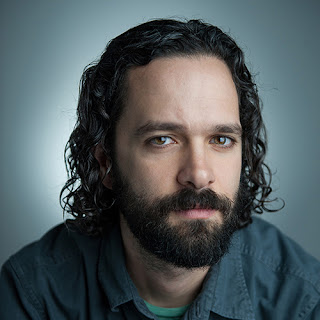

Job roles in the VFX industry
Compositor - Compositors construct the final image by combining layers of previously created material, including computer animation, special effects, graphics, 2D animation, live action and static background plates.
Concept Artist - Concept Artists produce the illustrations that help production Designers realize their vision.
Digital Preparation Artist(Paint/Prep) - Digitally preparing the plate for the compositing department to layer in CG, digital matte painting, graphics or other photographed elements, sometimes using green screen or effects photography.
Layout Artist (3D Computer Animation) - Break down 2D storyboards into 3D shots. They use production designs and models as reference to build locations and major props block in the position of characters, to select camera angles and to plot camera moves. They are responsible for staging every shot and plotting the action that will take place within each scene.
Lighting Technical Director (Lighter) - Make sure there is consistency in lighting, colour balance and mood between the various elements of a shot or scene, When appropriate, they ensure the computer-generated imagery looks photo-realistic match the live action plates.
Match Move Artist - Translating and imitating the camera movements in live action shots and matching those movements in 3D computer animation.
Matte Painter - Matte Painters create Digital Matte Paintings that are virtual backgrounds used to either completely replace or embellish live action photographed plates.
Producer(VFX) - Responsible for the overall running of a project, from staffing to scheduling and budget.
Roto Artist - Roto Artists trace the areas of live action frames where computer graphics will overlap or interact with live image
Runner - Runners help keep the VFX artists happy and productive through support and taking on basic tracking, project management and animation duties.
Technical Director - Using skills in computer programming and an eye for detail to make near-impossible animations possible.
VFX Supervisor - Makes sure that VFX shots are identified, and elements are captured appropriately for port-production.
Concept Artist - Concept Artists produce the illustrations that help production Designers realize their vision.
Digital Preparation Artist(Paint/Prep) - Digitally preparing the plate for the compositing department to layer in CG, digital matte painting, graphics or other photographed elements, sometimes using green screen or effects photography.
Layout Artist (3D Computer Animation) - Break down 2D storyboards into 3D shots. They use production designs and models as reference to build locations and major props block in the position of characters, to select camera angles and to plot camera moves. They are responsible for staging every shot and plotting the action that will take place within each scene.
Lighting Technical Director (Lighter) - Make sure there is consistency in lighting, colour balance and mood between the various elements of a shot or scene, When appropriate, they ensure the computer-generated imagery looks photo-realistic match the live action plates.
Match Move Artist - Translating and imitating the camera movements in live action shots and matching those movements in 3D computer animation.
Matte Painter - Matte Painters create Digital Matte Paintings that are virtual backgrounds used to either completely replace or embellish live action photographed plates.
Producer(VFX) - Responsible for the overall running of a project, from staffing to scheduling and budget.
Roto Artist - Roto Artists trace the areas of live action frames where computer graphics will overlap or interact with live image
Runner - Runners help keep the VFX artists happy and productive through support and taking on basic tracking, project management and animation duties.
Technical Director - Using skills in computer programming and an eye for detail to make near-impossible animations possible.
VFX Supervisor - Makes sure that VFX shots are identified, and elements are captured appropriately for port-production.
Monday, 21 March 2016
VFX Pipeline
VFX Pipeline
1) Research and Development - this plays a key role in the vfx pipeline because the R & D team can be crucial for being able to manipulate the newer more advanced tools to make a movie stand out, there is also a saying you can never have to much information.
2) Tests - These are vital to get funding for a film. They usually require a team of skilled artists to get the tests done on short notice to show the client that their vision can become a reality and give them confidence
3) Pre-Vis - This is where you do a rough layout of your scene in software (such as Maya) to plan out and get a grasp of what your going for and where everything should be. A good example is the Lord of the Rings Pre-Vis for the Mines of Moria scene.
4) Modelling - this is needed to turn clients sketches and real life models into fully functional high res CG characters. Another role of modeling is to have each asset modeled at different quality levels high for final render, medium for animation and low for Pre-Vis.
5) LIDAR (Light and Radar) - A Lidar is a laser based 3D scanning device that can make some really realistic looking models for environments and buildings smaller models will use a similar machine as well.
6) Film Scans - This is the function of getting footage from a film reel, many movies use this Each frame is scanned as a separate high dynamic range image to preserve as much detail as possible.
7) Grading - The purpose of grading is to make sure all the shots look the same and have the same "feel" so there are no sudden jumps in brightness or colour. This is done using colour and exposure changes.
8) Plate Preparation - in filming it is almost impossible to get a 100% clean film, so there are dust spots and chemical patches on the scans. because of this a team of compositors go through and paint out any scratches or dust that appears in the scans this has been referred to as "Dust Busting".
9) Rigging - Rigging is used to create a skeleton for a model or character. This makes it a lot easier to animate as you can move the bone structure in a more natural way rather than moving the faces frame by frame. We haven’t delved into this topic and it most likely will not be applied to our scene, however I would like to learn how to do it for when it comes to games design.
10) Look Development - This is where you take the time to get the shot exactly how you want it and to make sure that it fits the rest of the scene. For the most part we got the right angles that we could get for our shots in the time given, however if we had more time it would be improved.
11) Lighting and Rendering - Lighting and Rendering is where you make sure that the light in the scene is in the right position and is hitting the right objects. For example you would prefer to have the light shining on a more focused area of the scene than anywhere else.
12) Texturing - Texturing is the process of making sure that all of your models in your scene look like they belong there and look high quality. In films like the Avengers all of the destructible wall will have to be well textured and nicely rendered. This can be done in a software such as 3DS Max.
13) Tracking - Tracking is used in various kinds of shots, for example it is used on faces if they are going to be later replaced by a CGI face such as Colossus out of Deadpool. However it can also be used to make an object still in a shot.
14) Effects Animation - Is used to create various kinds of effects ranging from dust to water, etc. I think that this would really fit the scene as the runner speeds past the screen. This would also give the viewer a more immersive experience.
15) Rotoscoping - unlike in animation, VFX rotoscoping used to create a mask for an element so it can be extracted out to be placed on a different background. i have not yet got round to trying this, however it would fit our scene very much so if we were to change the story a bit to suit it.
16) Elemental Shoot - An Elemental shoot is where you record various elements that can be used in your scene, for example fire. Fire is used loads throughout films whether its on the end of a torch or a car engine on fire. We haven’t applied this thus far as it is our first shoot and we went quite strict on the risk assessment because of this.
17) composition - compositing is the last process that the the VFX pipeline goes through it is adding all the CG, elements and scanned plates as well as matte paintings. The compositer will use a variety of techniques to intergrate everything together.
use in the production of actual sequences on the film. Tests are done as proof-of-concept pieces to give the client confidence that what they want to achieve is possible. Tests are generally done by very experienced artists as they are often highly experimental and complicated with tools needing to be written on the fly by the team doing the test. Once the work is won the process of building the models can begin
17) composition - compositing is the last process that the the VFX pipeline goes through it is adding all the CG, elements and scanned plates as well as matte paintings. The compositer will use a variety of techniques to intergrate everything together.
Thursday, 17 March 2016
12 Principles of Animation
In Animation there is so much you can do, your imagination is boundless but within animation there is 12 principles. Each principle is as important as the next and is universally accepted in animation.
The people who came up with the 12 principles originally worked for Disney known as "the grumpy old men", although at the time they were young and making new techniques for an early art form.
1. Squash and stretch - this is distorting shapes and exaggerating movements, good for movement like sneaking and to show emotion in facial expression.


3. Staging - present your ideas so it makes sense (this relies heavily on timing) and conveys a message, using an action to create a mood or storyline.
4. Straight Ahead - animating each frame in order. (pose to pose) Which leads to great looking, stylized animation an example of this is below, you would use pose to pose to make it look as fluid as possible.
5. Follow through and overlapping action - this is mostly used for limbs, clothing and other attributes. it is based on how in physics stuff doesn't just stop dead in its tracks, actions and attributes continue and overlap into the next action.
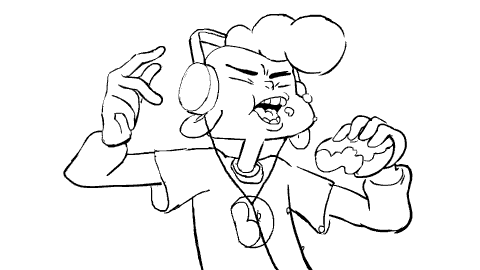
6. Slow in and Slow out - objects speed up and slow down as the animation plays, this is in day/night cycle curves. and is also used to show when physics are taking effect such as slowing at the peak of a jump.
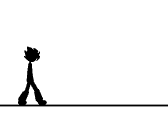
7. Arcs - An Arc often relies on ease in and ease out, it is an action that follows a circular path, it is most effective in human and animal movements.

8. Secondary animation - Extra little bits of animation, which support the main movement/ animation. These are often hands, legs and facial features.

9. Timing - Number of frames between movement, with low frames the animation looks fast and with more frames the animation looks slower and more precise. Timing is useful for giving texture and interest in a movement using more or less frames and is good for making something faster that would of been tedious.
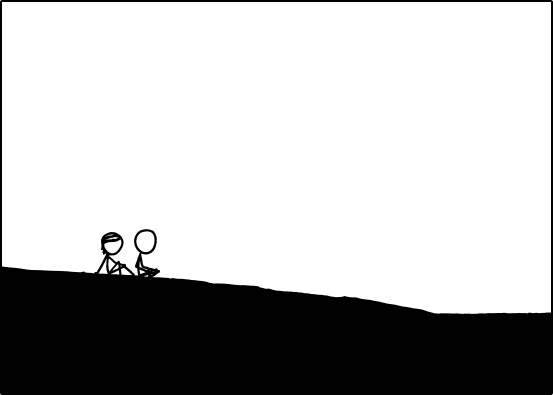
10 - Exaggeration - pushing movements and poses to extremes. makes more of an impact and draws attention to that animation. Such as bugs bunny when he is in love it draws attention by making it look like his heart is gonna burst.

11. Solid drawing - More relevant in 2D animation design characters with a 3D form, giving it weight and volume to create the illusion of a 3D object.
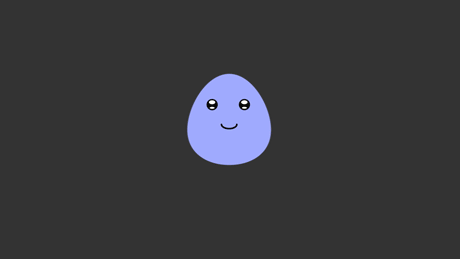
12. Appeal - Making animation interesting to the viewer, designing characters to attract the viewer, this is most relatable to DC and Marvel comic animations as everyone appeals to the superhero but most of the time the villain looks cooler because he is made to appeal to the audience.

Friday, 11 March 2016
Easter Game - Eggs
I have volunteered for an Easter game for the college, in which a rabbit maneuvers around a level collecting good eggs and avoiding bad eggs.
So far everything is going swimmingly except that we need more egg variations, a new catchier name and an instructions screen. For the name I haven't got past anything better than Hopsy's Eggcelent Adventure but i suppose it will have to do for now.
For the eggs i have uploaded 5 new skins, The first being more unique than the rest is "Limbegg"
We needed to create egg skins as every 5 eggs a random egg appears in our game to keep our audience enthralled in it.
Inspiration from limbo the critically acclaimed platformer.
These I named the "Castle Crasheggs"
" Spidegg Man"
"Sunderlegg"
"Newcastlegg"(Bad Egg)
I had a lot of fun making these eggs its amusing enough just coming up with the puns.
with the instructions screen owan and izzy worked together to come up with this finished product which clearly illustrates how to play the game:

Monday, 1 February 2016
Guardians of the Galaxy - VFX
I recently watched Guardians of the Galaxy, personally i thought it was a great film and as an added bonus it had heaps and heaps of visual effects to go with it.
My favourite character was of course Groot the loveable tough Ent-like creature that acted as muscle for his furry friend Rocket, all the way through the film Groot had multiple scenes with great VFX from something as simple lighting up a cave to him incasing his friends in a wooden protective sphere when they were in great danger.


The storyline is a little bit weird but it runs pretty smoothly but i wasn't too interested in that aspect. What was a truly great was the BIG VFX scenes which must have had so much effort put into them such as in the Nova Corps blockade scene that was truly awesome where they create a seemingly impenetrable barrier with all their ships or the Xandar Orb chase scene as they would need to choreograph Rocket and Groot into it while making it still look smooth both very well executed scenes./cdn0.vox-cdn.com/uploads/chorus_asset/file/3669038/2015-05-02%2021_54_18.gif)
/cdn0.vox-cdn.com/uploads/chorus_asset/file/3669038/2015-05-02%2021_54_18.gif)
Here you can watch the full fight scene on youtube at: https://www.youtube.com/watch?v=YlyPxpLraaA
Not one of the best films in some departments but if you like lots of action and some jaw dropping VFX i'd give it a watch.
Friday, 29 January 2016
Rodeo - Visual Effects Company
From taking over the reigns from Screen Scene VFX with Game of Thrones, to helping with such great films as Lucy, Inception and Edge of Tommorow Rodeo has come a long way from when it was formed in 2006. 
With 300 "accomplished visual effects professionals" they have contributed to over 50 films, that's an average of 5 films a year! The company covers all aspects of VFX from building sci-fi cities to creating realisitic storms and waterfalls Rodeo do it all.
The President of the company is Sebastien Moreau who takes pride in Rodeo as he and his team have gone out of their way to make it 1 of the best VFX companies in the world with a LONG list of notable clients and a well recruited team of experts Rodeo excels in VFX.

With 300 "accomplished visual effects professionals" they have contributed to over 50 films, that's an average of 5 films a year! The company covers all aspects of VFX from building sci-fi cities to creating realisitic storms and waterfalls Rodeo do it all.

The President of the company is Sebastien Moreau who takes pride in Rodeo as he and his team have gone out of their way to make it 1 of the best VFX companies in the world with a LONG list of notable clients and a well recruited team of experts Rodeo excels in VFX.
Tuesday, 26 January 2016
Environment drawing
In College we were assigned to do thumbnails for an environment of our choosing. I decided to try thumbnails for an overgrown or abandoned urban area. I took inspiration from games such as "The Last of Us" and "I Am Alive" but wanted to make my pictures diverse so i got some inspiration from films such as "The Road" and "I Am Legend" aswell.
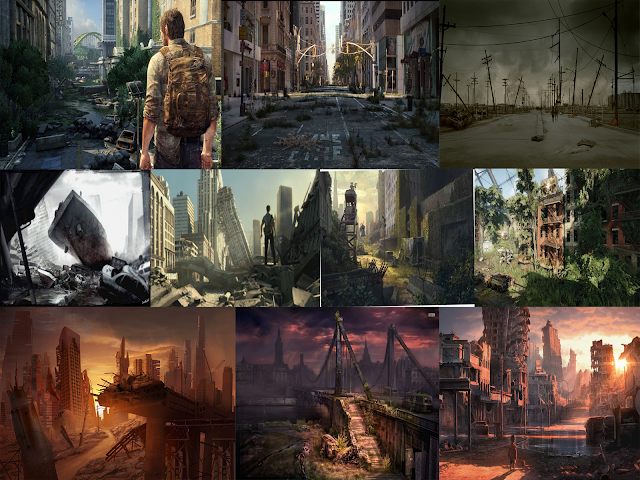
I was taught that thumbnails are quick sketches usually not too big but show some detail, you create a few to show different views of what your drawing. They are important in the industries because you can quickly show your idea to give a good impression of what you want to make and it helps other people by making their jobs easier if they are going off a sketch and not their own idea.

I was taught that thumbnails are quick sketches usually not too big but show some detail, you create a few to show different views of what your drawing. They are important in the industries because you can quickly show your idea to give a good impression of what you want to make and it helps other people by making their jobs easier if they are going off a sketch and not their own idea.
Above is a drawing I completed on the graphics tablets we have been using, I have chosen an abandoned urban theme for my work and I have to say they make drawing so much easier and also more enjoyable because you can pretty much never make a mistake so you just relax and make art
Saturday, 23 January 2016
VFX Timeline
VFX compared to most things has a relatively short timeline, this is because it is a pretty new way of making film.
The first milestone for VFX was Bound for Glory (1976) because they used the first steady-cam which made a huge change in the film industry as the user had so much more control and stability when using the camera
Made by Garret Brown Filmmaker and inventor, as seen Below.
The next Milestone is Star Wars (1977) as the quality of the special and visual effects really raised the bar, and saw the creation of George Lucas own Industrial Light and Magic who lead the way into the new industry of VFX.
When Superman (1978) was being filmed the invention of the Zoptic system came about, which when used gave the illusion of a man flying so was hugely successful for Superman.The way it worked was by combining foreground performance with pre-filmed background footage to create the flying effect.

A huge milestone for the VFX industry was Star Trek The Wrath of Khan (1982) this is because it involved the first fully CGI scene. The people who made this then went on to form Pixar and be hugely successful.
After the First fully CGI scene there came the first hard-bodied CGI character in Young Sherlock Holmes (1982). made by ILM and what would go on to be Pixar, The stained glass knight was a marvel to behold in the visual effects world.
Not too long after that there came the first fully CGI soft-bodied character. This appeared in The Abyss (1985) when making the N.T.I (evil water monster), I think it still holds up by today's standards pretty well seeing as its 25 years old.
Another Milestone for VFX was in Terminator 2 Judgement day (1991). The VFX artists used a digital imaging software which was an early form of photoshop, this probably payed tribute to photoshops success.

The final milestone in the VFX timeline is Jurrasic Park (1993) in which they were the first to use fully CGI animals, strangely enough there were much more scenes using animatronics and "special effects" than using visual effects, this demonstrates that VFX and SFX should go hand in hand when making a films.

Visual effects has come so far in such little time and it's amazing looking at where we started and what we can manage to achieve today, with films such as Lucy, Inception and X-men days of future past I can only dream of what comes next. All I know is I can't wait!
Wednesday, 20 January 2016
Coding with Ant 2
I am coming up to my big coding exams in a couple months, so today we have been defining coding terms.
these will help me with understanding code terms further and will be vital to know in both exams.
We are also working on an asteroids game to get a better knowledge of code as you can change the mechanics quite easily without breaking the game and it doesn't take much code to set up.

This is the code for the player controller argueably the most important as without this there would be no movement or shooting.
Sunday, 17 January 2016
VFX first shot
Today we were put in groups to come up with 30-40 second clip with VFX elements in it. We decided we would each come up with an idea then we would pick the best one out of them.
After some careful consideration we came up with:
1. A slow motion special effect, with people dodging bullets and doing flips in slo mo.
2. control of the elements, so being able to control water, fire, earth, and air.
3. fantastic 4 esque squad so we would make someone like each character (invisibility, fire control, stretch and turning skin to rock.
4. Parkhour with slo-motion and explosions used while people are freerunning.
5. Space - so anything from star wars blasters to having someone floating through space like gravity.
6. Jumper esque special effect so with teleporting and use of slo mo for certain parts.
We discussed the ideas then decided on the Jumper effect as it seems the most interesting and isn't too difficult to implement into our clip.
After some careful consideration we came up with:
1. A slow motion special effect, with people dodging bullets and doing flips in slo mo.
2. control of the elements, so being able to control water, fire, earth, and air.
3. fantastic 4 esque squad so we would make someone like each character (invisibility, fire control, stretch and turning skin to rock.
4. Parkhour with slo-motion and explosions used while people are freerunning.
5. Space - so anything from star wars blasters to having someone floating through space like gravity.
6. Jumper esque special effect so with teleporting and use of slo mo for certain parts.
We discussed the ideas then decided on the Jumper effect as it seems the most interesting and isn't too difficult to implement into our clip.
We went around the college taking pics of where we are going to shoot our VFX scenes. we took into careful consideration where we would have our scenes because you cannot move the camera in the scenes where we are using VFX.
We then came up with a storyboard for how our clip will play out. each of us came up with our own storyboard then took the best parts out of all of them to make the final piece as shown below:
"Main character walks down the corridor and gets confronted and boxed in by 4 people.
these people found the antagonist and are holding them over the second floor railing because maybe the protagonist owed them money or didn't do something they were supposed to for moral reasons etc..
The character would then manage to get out of their grasp and fall to the floor but jump at the last moment (obviously), to the elevator and try to hide from them on the 1st floor
First person goes to throw the first hit and the main character teleports behind him and starts to take on all 4 people at once taking advantage of his/her abilities.
After 3 people are beaten down, the last ambusher gets punched through a wall.
Camera looks at the 4 people that have been defeated and switches back to the main character. The main
character fall to his knees as he is exhausted and overheated *particle effect radiating from person*"
personally i think it is going to be great and I hope the rest of my group has the same enthusiasm!
Update: We have decided to go against all the fighting scenes instead it is a chase through the college with teleporting.
Wednesday, 6 January 2016
Colour Theory
In class we have been doing Colour Theory, In Colour Theory we talk about how colour is a massive part of gaming SFX and Animation. We started with how our brains perceive colour, which is that we use cones to see the 3 primary colours red, green and blue and we use the rods to see the depth of the colour.

There are different ways we use colours to appeal to different things, such as Monochromatic colour scheme uses 1 colour to create atmosphere, we use Analogous colour scheme it is when you use a colour and the adjacent colours, because they are pleasing to the eye. We have the Triadic colour scheme which creates a sureal look (e.g Superman red, yellow, blue) it is where you use the 3 opposite colours on the colour wheel and we also use complimentary colour scheme which really makes the colours *pop* out (such as the hulks green skin to his purple trousers) because they are opposite colours on the colour wheel.


There are different ways we use colours to appeal to different things, such as Monochromatic colour scheme uses 1 colour to create atmosphere, we use Analogous colour scheme it is when you use a colour and the adjacent colours, because they are pleasing to the eye. We have the Triadic colour scheme which creates a sureal look (e.g Superman red, yellow, blue) it is where you use the 3 opposite colours on the colour wheel and we also use complimentary colour scheme which really makes the colours *pop* out (such as the hulks green skin to his purple trousers) because they are opposite colours on the colour wheel.
^
|
We made a Triadic colour wheel to show both how the colours combined and how different opacities created different shades.
It is really interesting to learn about colour theory, I didn't realize how much depth (no pun intended) there was to something as simple as colour. I think my favourite colour scheme is Analogous because it brings the environment to life with a feeling such as if its all different blues it can make it look cold or depressing or electric if it's red it can make it hot or evil just in the way you use the colours, amazing!

Monday, 4 January 2016
Star Wars Review
Well where can I begin? on the day after its release, the college took us to see the new Star Wars film "The Force Awakens" episode 7. I had seen the other films and thoroughly enjoyed them so was up to date with the story and had a bit of skepticism whether the film would live up to its name or not.
Personally I think they did a great job on the film, the special effects were fantastic and the story was paced just right and really caught me off-guard with the ending. I thought at first I would hate Kylo-Ren's new lightsaber but it actually worked really well giving him an advantage over other sabers and I also love the new BB-8 when I thought I wouldn't like him either (R2 is still better though).
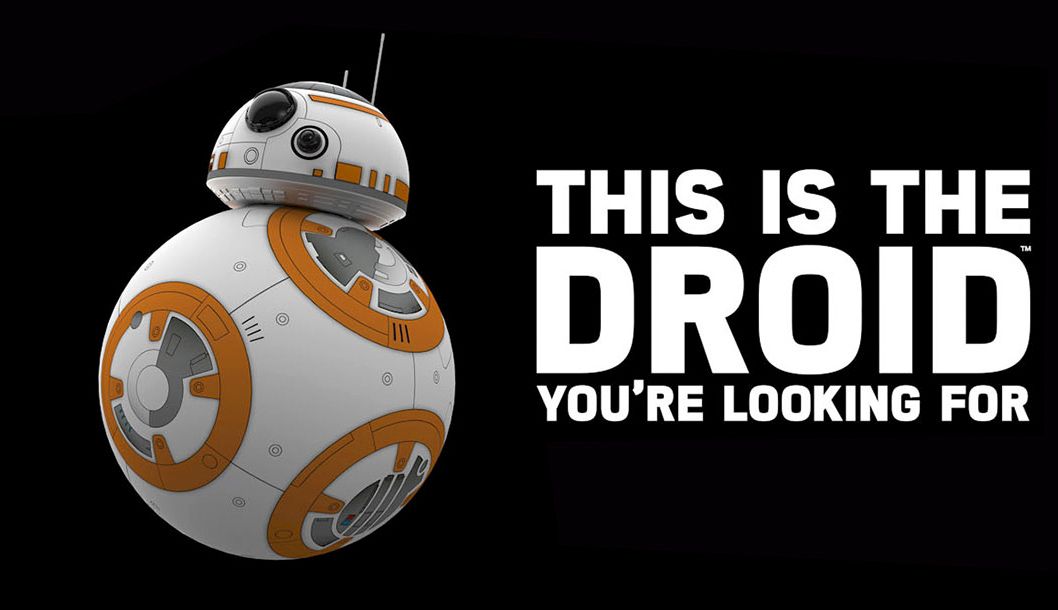
The only thing that really grinded on me was that they reused so many old ideas such as how BB-8 holds key infomation like R2D2 in "A New Hope" and how the important child is sent of to a faraway desert planet until they are old enough to fulfill their destiny. And how that stupid stormtrooper started off that annoying TRAITOR! meme. Nothing too bad just a little off-putting.
I think my favourite character was Han Solo, even after all these years Harrison Ford still portrays his character excellently and he was badass with chewy's crossbow. but he's dead! so I'll have to pick another one. Probably Captain Phasma because she is pretty much the only woman stormtrooper which is awesome and looks amazing in that white and chrome armor (plus she plays Gwen in Game of Thrones added bonus).
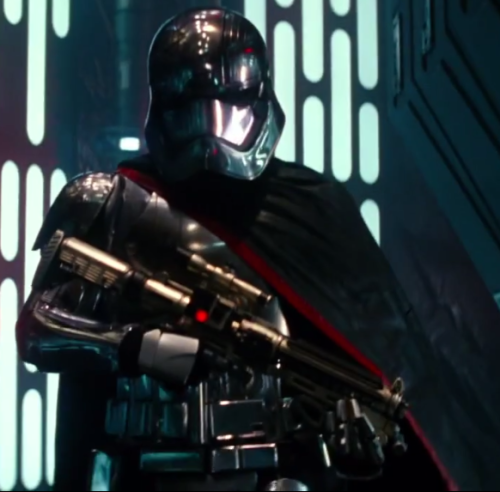 <-------{damn that's some sweet armor}
<-------{damn that's some sweet armor}
All in all it was amazingly done by Disney (despite people saying it was going to be awful) I just hope for some more original storytelling and more crazy new sith lords!

Personally I think they did a great job on the film, the special effects were fantastic and the story was paced just right and really caught me off-guard with the ending. I thought at first I would hate Kylo-Ren's new lightsaber but it actually worked really well giving him an advantage over other sabers and I also love the new BB-8 when I thought I wouldn't like him either (R2 is still better though).

The only thing that really grinded on me was that they reused so many old ideas such as how BB-8 holds key infomation like R2D2 in "A New Hope" and how the important child is sent of to a faraway desert planet until they are old enough to fulfill their destiny. And how that stupid stormtrooper started off that annoying TRAITOR! meme. Nothing too bad just a little off-putting.
I think my favourite character was Han Solo, even after all these years Harrison Ford still portrays his character excellently and he was badass with chewy's crossbow. but he's dead! so I'll have to pick another one. Probably Captain Phasma because she is pretty much the only woman stormtrooper which is awesome and looks amazing in that white and chrome armor (plus she plays Gwen in Game of Thrones added bonus).
 <-------{damn that's some sweet armor}
<-------{damn that's some sweet armor}All in all it was amazingly done by Disney (despite people saying it was going to be awful) I just hope for some more original storytelling and more crazy new sith lords!
Subscribe to:
Comments (Atom)
